Take Control of BBEditGlenn Fleishman Read this 199-page ebook to learn how to:
Set up BBEdit for maximum efficiency:
Configure key standard and expert preferences for optimal usage.
Sync BBEdit settings and support files between Macs using Dropbox.
Create text factories that automate sequences of text processing commands.
Create "clippings" of boilerplate text, complete with dynamic placeholders.
Use Dropbox or a version control system to track versions of documents.
Start work on the right track:
Collect multiple resources—including files, folders, and URLs—into a single project window.
Use BBEdit's many options for opening and saving files.
Work with remote files via BBEdit's FTP/SFTP browser windows.
Type faster, search better, and automate repetitive bits:
Control BBEdit with keyboard shortcuts.
Write faster with text completion of words, code snippets, HTML tags, and more.
Clean up text with spurious tabs, incorrect case, gremlin characters, and more.
Search for and replace text across multiple documents at once.
Learn how to use grep pattern matching for powerful searches.
Write in Markdown, and preview Markdown documents.
Compare and collaborate effectively:
Discover best practices for commenting and revision tracking.
Compare multiple versions of documents.
Run your Web site like a wizard:
Create HTML and CSS files using BBEdit's effective, extensive markup tools.
Preview dynamic pages locally with user-defined preview templates.
Clean up old or badly coded Web pages.
Build Web sites using templates and includes.
Connect BBEdit to Fetch, Interarchy, or Transmit to edit remote files.
Maintain Web sites in BBEdit using four different workflows. Mastering Predictive Analytics with RRui Miguel Forte Master the craft of predictive modeling by developing strategy, intuition, and a solid foundation in essential conceptsAbout This Book Grasp the major methods of predictive modeling and move beyond black box thinking to a deeper level of understandingLeverage the flexibility and modularity of R to experiment with a range of different techniques and data typesPacked with practical advice and tips explaining important concepts and best practices to help you understand quickly and easilyWho This Book Is For
This book is intended for the budding data scientist, predictive modeler, or quantitative analyst with only a basic exposure to R and statistics. It is also designed to be a reference for experienced professionals wanting to brush up on the details of a particular type of predictive model. Mastering Predictive Analytics with R assumes familiarity with only the fundamentals of R, such as the main data types, simple functions, and how to move data around. No prior experience with machine learning or predictive modeling is assumed, however you should have a basic understanding of statistics and calculus at a high school level. What You Will Learn Master the steps involved in the predictive modeling processLearn how to classify predictive models and distinguish which models are suitable for a particular problemUnderstand how and why each predictive model worksRecognize the assumptions, strengths, and weaknesses of a predictive model, and that there is no best model for every problemSelect appropriate metrics to assess the performance of different types of predictive modelDiagnose performance and accuracy problems when they arise and learn how to deal with themGrow your expertise in using R and its diverse range of packagesIn Detail
R offers a free and open source environment that is perfect for both learning and deploying predictive modeling solutions in the real world. With its constantly growing community and plethora of packages, R offers the functionality to deal with a truly vast array of problems.
This book is designed to be both a guide and a reference for moving beyond the basics of predictive modeling. The book begins with a dedicated chapter on the language of models and the predictive modeling process. Each subsequent chapter tackles a particular type of model, such as neural networks, and focuses on the three important questions of how the model works, how to use R to train it, and how to measure and assess its performance using real world data sets.
By the end of this book, you will have explored and tested the most popular modeling techniques in use on real world data sets and mastered a diverse range of techniques in predictive analytics. Make: Technology on Your Time Volume 37: Homegrown Drones!Mark Frauenfelder Everyone's buzzing about drones! Why? Because drones are cool and fun! They can be used to deliver pizza, as surveillance and security devices, for aerial photography and more! In MAKE's v37, we’ll look at all this, plus take a "maker's" view on drones: how DIY buffs can actually make one. There are over 25 pages in this special section, including a walk-through drone taxonomy (air/land/sea), the landscape of the law surrounding drones today, and a bird's eye view of the drone aerial photography project.
Other projects in this packed issue: License plate guitarChameleon bag (changes colors based onwhat's missing from your bag!)GPS cat collarZombie flashlight (uses dead batteries and empty chapstick tube) Introduction to Image Processing Using R: Learning by ExamplesAlejandro C. Frery, Talita Perciano This book introduces the statistical software R to the image processing community in an intuitive and practical manner. R brings interesting statistical and graphical tools which are important and necessary for image processing techniques. Furthermore, it has been proved in the literature that R is among the most reliable, accurate and portable statistical software available. Both the theory and practice of R code concepts and techniques are presented and explained, and the reader is encouraged to try their own implementation to develop faster, optimized programs. Those who are new to the field of image processing and to R software will find this work a useful introduction. By reading the book alongside an active R session, the reader will experience an exciting journey of learning and programming. | Mathematik fur Ingenieure II Fur DummiesJ. Michael Fried Vektoranalysis, mehrdimensionale Analysis, Differentialgleichungen und vieles mehr
Auch wenn Mathematik nicht gerade Ihr Lieblingsfach ist, zu einem Ingenieursstudium gehort sie einfach dazu. Manchmal ist es hier auch nicht einfach mit den Grund - lagen getan und Sie mussen sich etwas komplexeren Gebieten der Mathematik nahern. Aber keine Sorge: J. Michael Fried erklart Ihnen, was Sie uber mehrdimen - sionale Analysis, Vektoranalysis und Co. wissen sollten. Auch Differentialgleichungen, von einfachen uber hohere bis zu Systemen linearer Differentialgleichungen, kommen hier nicht zu kurz. So ist dieses Buch der richtige Begleiter fur Sie, wenn Sie in der Ingenieursmathematik voranschreiten wollen. Mastering Regular ExpressionsJeffrey E. F. Friedl Regular expressions are a powerful tool for manipulating text and data. If you don't use them yet, you will discover in this book a whole new world of mastery over your data. If you already use them, you'll appreciate this book's unprecedented detail and breadth of coverage. If you think you know all you need to know about regular expressions, this book is a stunning eye-opener.
With regular expressions, you can save yourself time and aggravation while dealing with documents, mail messages, log files — you name it — any type of text or data. For example, regular expressions can play a vital role in constructing a World Wide Web CGI script, which can involve text and data of all sorts.
Regular expressions are not a tool in and of themselves, but are included as part of a larger utility. The classic example is grep. These days, regular expressions can be found everywhere, such as in:
Scripting languages (including Perl, Tcl, awk, and Python)Editors (including Emacs, vi, and Nisus Writer)Programming environments (including Delphi and Visual C++)
While many of these tools originated on UNIX, they are now available for a wide variety of platforms, including DOS/Windows and MacOS, so you can use them in your home environment. Additionally, many favorite programming languages offer regular-expression libraries, so you can include support for them in your own programs, and yes, even applets.
There can be certain subtle, but valuable, ways to think when you're using regular expressions, and these can be taught. Jeffrey Friedl has spent years helping people on the Net understand and use regular expressions. In this book he leads you through the steps of knowing exactly how to craft a regular expression to get the job done.
Regular expressions are not used in a vacuum. In this book, a variety of tools are examined and used in an extensive array of examples, with a major focus on Perl. Perl is extremely well endowed with rich and expressive regular expressions. Yet what is power in the hands of an expert can be fraught with peril for the unwary. This book will help you navigate the minefield to becoming an expert. The PHP Anthology: Object Oriented PHP Solution, Volume 1Harry Fuecks A compilation of best practice solutions to common Web Development problems in PHP, focusing on the achievement of practical goals by applying well-structured, object orientated software design principles.
Volume 1 covers the foundations of PHP including writing portable and reusable code, storing and extracting data from files, manipulating text, working with email and error handling.
In addition to being an excellent reference with over 60 customizable solutions, the book acts as an excellent primer for Object Orientated Programming. PHP 5 has now been released and has been given significant OOP features, which are a must-learn for PHP Developers.
All code in the book is backwards compatible with earlier versions of PHP. Scientific Computing with Python 3 - Second EditionClaus Fuhrer, Jan Erik Solem, Olivier Verdier Key Features Your ultimate resource for getting up and running with Python numerical computationsExplore numerical computing and mathematical libraries using Python 3.x code with SciPy and NumPy modulesA hands-on guide to implementing mathematics with Python, with complete coverage of all the key conceptsBook Description
Python can be used for more than just general-purpose programming. It is a free, open source language and environment that has tremendous potential for use within the domain of scientific computing. This book presents Python in tight connection with mathematical applications and demonstrates how to use various concepts in Python for computing purposes, including examples with the latest version of Python 3. Python is an effective tool to use when coupling scientific computing and mathematics and this book will teach you how to use it for linear algebra, arrays, plotting, iterating, functions, polynomials, and much more. What you will learn The principal syntactical elements of PythonThe most important and basic types in PythonThe essential building blocks of computational mathematics, linear algebra, and related Python objectsPlot in Python using matplotlib to create high quality figures and graphics to draw and visualize your resultsDefine and use functions and learn to treat them as objectsHow and when to correctly apply object-oriented programming for scientific computing in PythonHandle exceptions, which are an important part of writing reliable and usable codeTwo aspects of testing for scientific programming: Manual and AutomaticAbout the Author
Claus Führer is a professor of scientific computations at Lund University, Sweden. He has an extensive teaching record that includes intensive programming courses in numerical analysis and engineering mathematics across various levels in many different countries and teaching environments. Claus also develops numerical software in research collaboration with industry and received Lund University’s Faculty of Engineering Best Teacher Award in 2016.
Jan Erik Solem is a Python enthusiast, former associate professor, and currently the CEO of Mapillary, a street imagery computer vision company. He has previously worked as a face recognition expert, founder and CTO of Polar Rose, and computer vision team leader at Apple. Jan is a World Economic Forum technology pioneer and won the Best Nordic Thesis Award 2005-2006 for his dissertation on image analysis and pattern recognition. He is also the author of "Programming Computer Vision with Python" (O'Reilly 2012).
Olivier Verdier began using Python for scientific computing back in 2007 and received a PhD in mathematics from Lund University in 2009. He has held post-doctoral positions in Cologne, Trondheim, Bergen, and Umeå and is now an associate professor of mathematics at Bergen University College, Norway. Table of Contents Getting StartedVariables and Basic TypesContainer TypesLinear Algebra – ArraysAdvanced Array ConceptsPlottingFunctionsClassesIteratingError HandlingNamespaces, Scopes, and ModulesInput and OutputTestingComprehensive ExamplesSymbolic Computations - SymPyReferences Modeling Time in ComputingCarlo A. Furia, Dino Mandrioli, Angelo Morzenti, Matteo Rossi Models that include a notion of time are ubiquitous in disciplines such as the natural sciences, engineering, philosophy, and linguistics, but in computing the abstractions provided by the traditional models are problematic and the discipline has spawned many novel models. This book is a systematic thorough presentation of the results of several decades of research on developing, analyzing, and applying time models to computing and engineering.
After an opening motivation introducing the topics, structure and goals, the authors introduce the notions of formalism and model in general terms along with some of their fundamental classification criteria. In doing so they present the fundamentals of propositional and predicate logic, and essential issues that arise when modeling time across all types of system. Part I is a summary of the models that are traditional in engineering and the natural sciences, including fundamental computer science: dynamical systems and control theory; hardware design; and software algorithmic and complexity analysis. Part II covers advanced and specialized formalisms dealing with time modeling in heterogeneous software-intensive systems: formalisms that share finite state machines as common “ancestors”; Petri nets in many variants; notations based on mathematical logic, such as temporal logic; process algebras; and “dual-language approaches” combining two notations with different characteristics to model and verify complex systems, e.g., model-checking frameworks. Finally, the book concludes with summarizing remarks and hints towards future developments and open challenges. The presentation uses a rigorous, yet not overly technical, style, appropriate for readers with heterogeneous backgrounds, and each chapter is supplemented with detailed bibliographic remarks and carefully chosen exercises of varying difficulty and scope.
The book is aimed at graduate students and researchers in computer science, while researchers and practitioners in other scientific and engineering disciplines interested in time modeling with a computational flavor will also find the book of value, and the comparative and conceptual approach makes this a valuable introduction for non-experts. The authors assume a basic knowledge of calculus, probability theory, algorithms, and programming, while a more advanced knowledge of automata, formal languages, and mathematical logic is useful. Foundations of Rule LearningJohannes Fürnkranz, Dragan Gamberger, Nada Lavrac Rules – the clearest, most explored and best understood form of knowledge representation – are particularly important for data mining, as they offer the best tradeoff between human and machine understandability. This book presents the fundamentals of rule learning as investigated in classical machine learning and modern data mining. It introduces a feature-based view, as a unifying framework for propositional and relational rule learning, thus bridging the gap between attribute-value learning and inductive logic programming, and providing complete coverage of most important elements of rule learning.
The book can be used as a textbook for teaching machine learning, as well as a comprehensive reference to research in the field of inductive rule learning. As such, it targets students, researchers and developers of rule learning algorithms, presenting the fundamental rule learning concepts in sufficient breadth and depth to enable the reader to understand, develop and apply rule learning techniques to real-world data. Programming and Customizing the AVR MicrocontrollerDhananjay Gadre This reader-friendly guide shows you how to take charge of the newest, most versatile microcontrollers around, Atmel's AVR RISC chip family. Inside, Electronics World writer and astronomy instrumentation developer Dhananjay V. Gadre walks you from first meeting these exciting new computers-on-a-chip all the way through design and ready-to-launch products. |
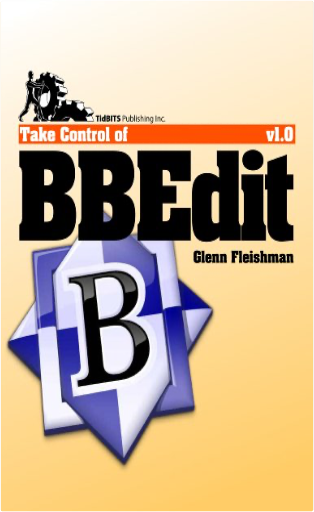
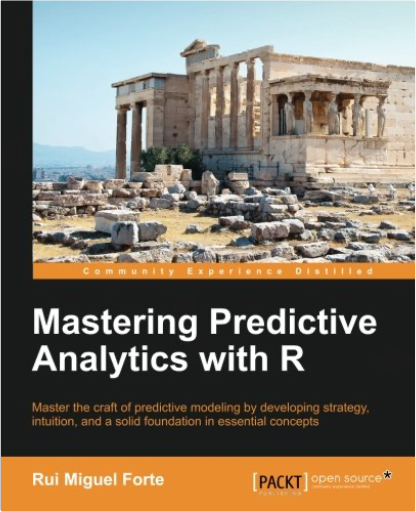

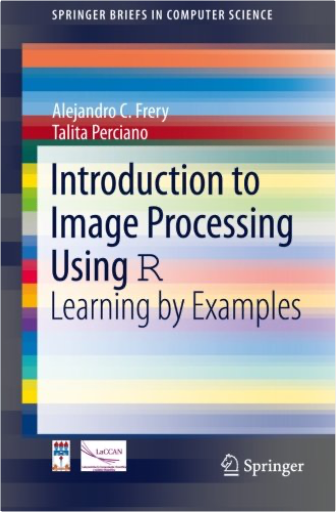
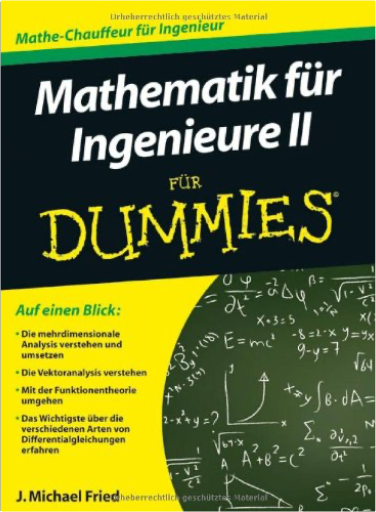
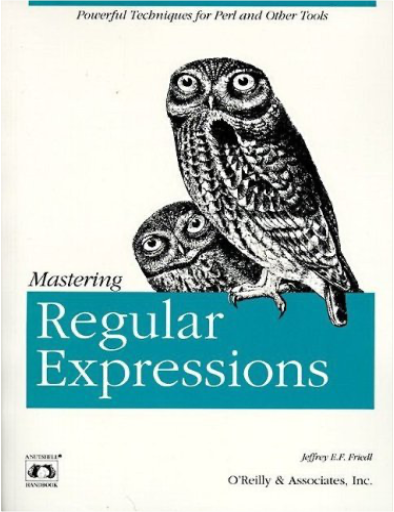
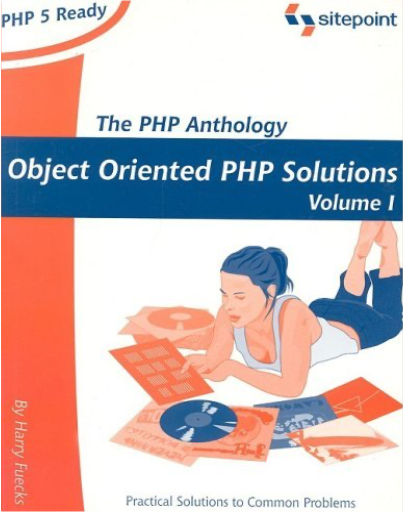
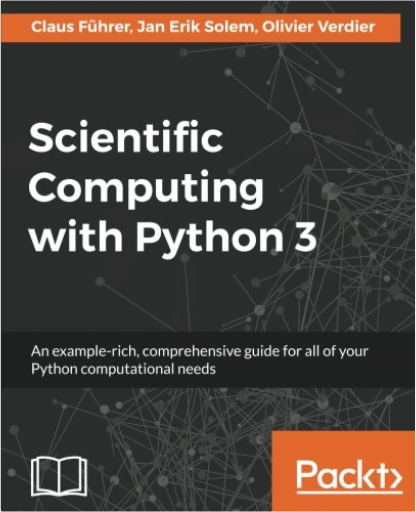
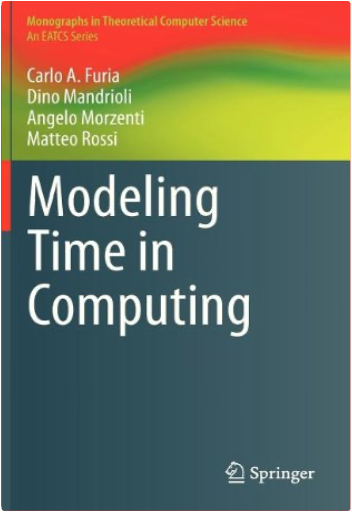
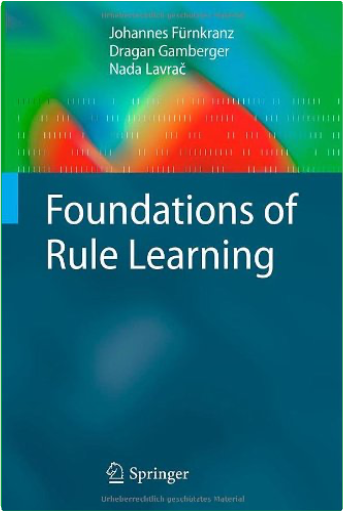
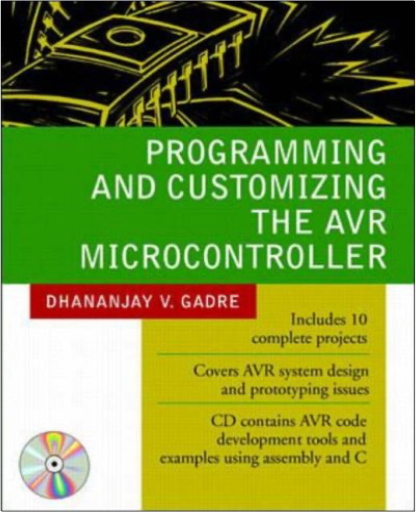

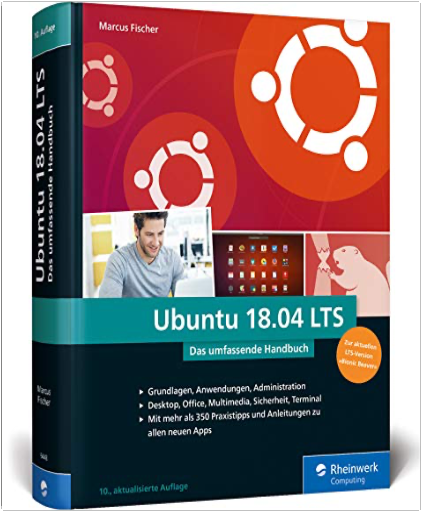


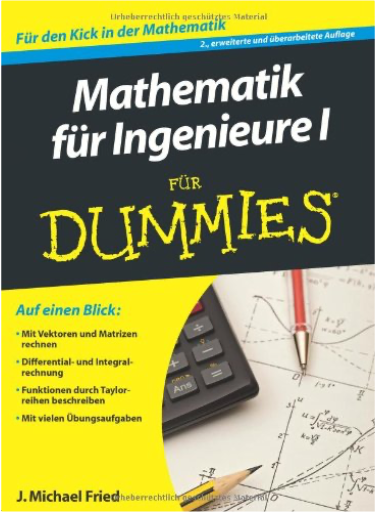
 Made with Delicious Library
Made with Delicious Library